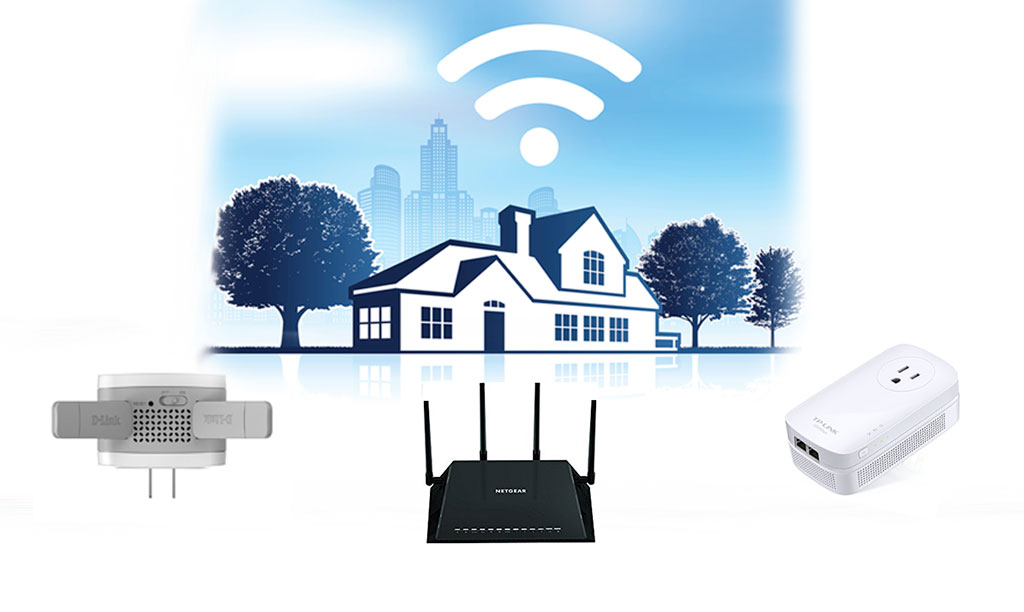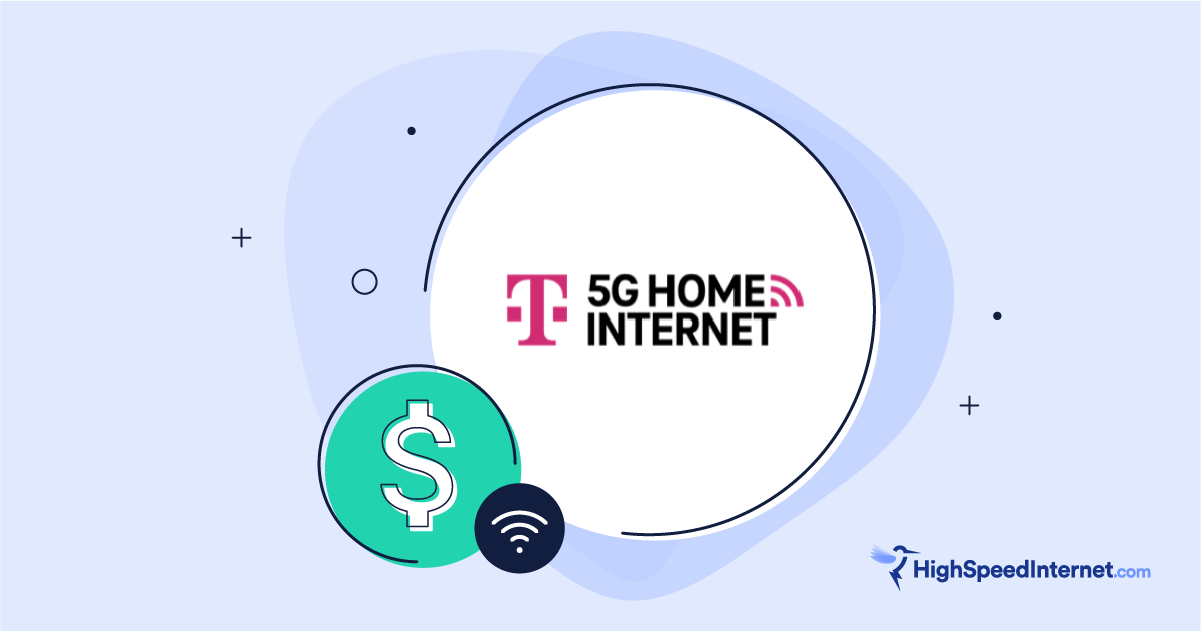How To Prepare Your Tech for a Natural Disaster
Make a plan in case big storms, earthquakes, or wildfires come your way
Dec 2, 2025 | Share
Emergency, How-To
Tornados, hurricanes, and wildfires are scary enough. What’s also scary is the prospect of losing connection if disaster comes your way. But you won’t have to worry as much if you’ve got some tech backups prepared.
Read our list of must-have items for your tech go bag. Then, get tips on how to stay connected online in different outage scenarios.
On this page:
How to make a tech go bag | How to prepare for a power outage | How to prepare for an internet outage | Backup internet options | Does internet type matter in storms? | FAQ
On this page:
- How to make a tech go bag
- How to prepare for a power outage
- How to prepare for an internet outage
- Backup internet options
- Does internet type matter in storms?
- FAQ
How to make a tech go bag
In a disaster, getting online isn’t your first priority. You need water, shelter, ways to stay cool (or warm), and so much more. Safety preparedness is not in my wheelhouse, but you should listen to the real safety experts and create a preparedness plan for everything you’ll need in case of a disaster.
That said, I do know a thing or two about tech preparedness. Here’s what I recommend to get your tech ready.
How to build your emergency connectivity kit*
- Purchase a small waterproof safe and include the following:
- Emergency numbers and medical info written down on paper
- A paper map
- Important documents like birth certificates, social security cards, property deeds, etc.
- Get backup charging blocks and cables for each kind of device you need and save them in a waterproof bag or container, or in your safe.
- Get a portable power bank (solar charging is a bonus) and charge it to full ahead of a storm.
- If getting online in an emergency is a necessity, purchase a standalone hotspot device and get a hotspot data plan with a different major provider than the one you use for your everyday phone.
- Pack a pair of wired earbuds and/or earplugs so you can concentrate in difficult conditions.
- Include a crank, solar, or battery-powered AM/FM/NOAA radio to listen to news and weather updates.
*Amazon info as of 7/19/2024. See full disclaimer.
How to prepare your smartphone
- Program important numbers into the smartphone of each person in your family.
- Add emergency contacts and medical info using your Health ID on iPhone or your Personal Safety app on Android.
- Take photos of your home and possessions in case you need to file claims later. Then, upload them to the cloud.
- Take photos of your important papers and IDs and save them in the cloud, in an app like Dropbox that has two-factor authentication.
- Subscribe to local police and fire department text alerts and follow them on social media (especially X).
- Leave airplane mode off so you receive wireless emergency alerts (WEA).
- Set up Wi-Fi calling and try it out ahead of time.
- Set up your important email accounts on mobile devices so you can authenticate access even if you can’t get to home computers.
- Download your favorite music and a few podcasts for entertainment and stress-relief while you wait.
How to prepare for a power outage
Most power outages last only a few hours, but if you’re in a major disaster, you can be without power (and also without internet) for several days. If that ever happens to you, staying safe and comfortable will be more important than checking Facebook or even attending work meetings. But there are a few things you can do to prepare so, eventually, you can contact loved ones, access GPS, and get back to everyday life:
- Fill up your gas tank in your vehicles so you can use them to charge devices (or get supplies and, well, more gas).
- Charge all your phones and tablets at the first hint of a storm. Then, keep one turned off so it’s still charged if you need it in an emergency and your other devices run out of juice. Close laptop lids until you need them to conserve the battery.
- Plug sensitive electronics like medical equipment into an uninterrupted power supply (UPS) device. These protect your devices from power surges when the power comes back on, and some have battery backup for up to four hours.
- Charge up your supply of external batteries or power banks, especially if you need them for medical devices.
- Plan ways to stay cool (or warm) depending on your climate, and keep your electronics with you so they don’t get damaged by extreme heat.
- Get a generator to keep all your important devices and appliances functioning, like the refrigerator, medical equipment, and so on. Your selection ranges from portable gas-powered units to propane-fueled models powerful enough to keep your AC running for days.
How to prepare for an internet outage
Planning for an internet outage in a climate disaster depends on how badly you need to stay connected, and for how long. Below are some options to consider.
Use your smartphone as a personal hotspot
Most outages of fully wired internet (cable, fiber, DSL) last just a few hours. If this happens but you still have 4G or 5G on your smartphone, you can use that device for most online needs. If you need a laptop, use your smartphone as a personal hotspot. You’ll run down the battery quickly and may eat through a lot of data, but it works in a pinch.
It’s a good idea to check for hotspot data on your plan ahead of time, too. Not all cell phone plans offer it, but many do.
Get a standalone hotspot device
If you know you will need to connect a lot of devices in an outage, invest in a standalone hotspot device and a data plan to support it. You’ll benefit from fast speeds and won’t run down the battery on your phone. Just remember that hotspot data uses the same networks as your cell phone, so if you don’t have cell service, your hotspot won’t work either.
One workaround is to choose a hotspot data plan with a provider other than your cell provider. In most cases, we recommend choosing among T-Mobile , Verizon , and AT&T .
Consider getting backup internet
If your provider has multiple outages a year or if you need to stay online for medical and safety reasons, consider backup internet. Below are a few options worth considering.
Xfinity customers have a new Storm-Ready Wi-Fi option
If you have Xfinity and you’re concerned about getting online in case of a storm or power outage, we have good news! The company’s new Storm-Ready Wi-Fi units are available for $7 per month for three years (or $252 outright). The unit automatically switches your Wi-Fi over to 4G internet in case of an outage, and, as a bonus, it has its own backup battery. When there’s no outage, these handy little devices double as Wi-Fi extenders.
Of course, LTE has to be available for this backup solution to work. Xfinity uses the Verizon network, so you’ll qualify only if you can get Verizon 4G where you live.
T-Mobile offers backup 5G internet
For $20 per month, you can get a T-Mobile 5G internet router to supplement your cable, fiber, or DSL internet connection.
I talked recently with my managing director, Manuel Delgado, who uses T-Mobile 5G as a backup for his Spectrum internet service. During recent Spectrum outages, Delgado says his T-Mobile router kicked in right away and offered plenty of speed to watch TV, connect a few smartphones, and handle Zoom calls. Delgado recommends T-Mobile backup for folks who need it. He added that installation and billing are super easy.
There are a few downsides, though. The T-Mobile router doesn’t have backup power, so you would need to plug it into a generator or large power bank in case of a power outage. And, of course, the $20 per month is annoying when you aren’t having frequent outages so don’t need the service.
Invest in a Starlink Roam 50GB
Starlink’s Roam 50GB receiver is brand new, so we can’t yet make a firm recommendation on its value as a backup internet service. However, early reports of the service are promising.
The cost for the dish is $599, and you can get a Roam plan for $50 per month, which gets you 50GB of high-speed data. The dish needs a clear view of the sky plus a power source, but it doesn’t have to be mounted permanently. Plus, it fits in a backpack.
I chatted with satellite internet expert Andreas Rivera, and he mentioned a few additional perks. You can pause your plan anytime, so you only have to pay for Roam when you need it. Then, if you start mid-month, your bill is prorated. Finally, you can use Starlink Roam while you’re in a moving car. There’s nothing else on the market like that.
Compare prices for backup internet
| Provider | Device | Monthly data allowance | Battery backup | Starting price | Shop online |
|---|---|---|---|---|---|
| Xfinity | Storm-Ready Wi-Fi | None, but traffic is deprioritized to 4G speeds | Two hours | $7.00/mo. for 36 mo. (or $252.00) | View Plans |
| T-Mobile 5G Home Internet | High-performance Gateway | 130GB, then slowed to 3G speeds | None | $20.00/mo. (equipment included) | View Plans |
| Starlink Roam | Roam 50GB | 50GB, then $1 for each additional GB* | None | $50/mo. |
Switch to a 5G home internet service
If you’re tired of dealing with outages from your wired provider but don’t want to pay for backup internet, consider switching to 5G home internet from Verizon, T-Mobile, or AT&T. In our tests, these services offer plans with enough speed and reliability to meet the everyday needs of a small household, and you can get a good deal if you bundle home internet with your cell phone plan.
Each provider offers 5G home internet throughout the country, but whether you qualify depends on your exact address.
The biggest difference between 5G and backup internet is that 5G home internet doesn’t subject you to strict data limits. Compared to wired internet, 5G is less reliable and may be slower, but is often cheaper and much easier to set up.
Compare 5G home internet plans and prices
| Provider | Starting price | Shop online |
|---|---|---|
| $55.00/mo.* | ||
|
| $50/mo.† w/ AutoPay | |

| $50/mo.‡ w/ AutoPay, plus taxes & fees. |
See disclaimers
Does internet type matter in a hurricane, heat wave, or wildfire?
All internet types can fail if a storm is bad enough. Damage could take down a PON (passive optical network) serving a whole neighborhood, for example. But each connection type also has advantages in bad weather. Here’s a quick chart with more info.
Internet connection type reliability in bad weather
| Technology type | Pros | Cons |
|---|---|---|
| Fiber internet |
|
|
| 5G home internet |
|
|
| LTE home internet |
|
|
| Traditional fixed wireless home internet |
|
|
| Cable |
|
|
| Satellite |
|
|
| DSL |
|
|
FAQs about staying connected in a storm
Does the weather affect Wi-Fi?
Do you need a backup home internet service?
Disclaimers
Compare prices for backup internet
* Starlink
Users on Mini Roam are limited to 50GB of Mobile Data and can use in-motion beyond 100mph
Compare 5G home internet plans and prices
* AT&T
AutoPay and paperless billing required. Monthly State Cost Recovery Charge in TX, OH, NV applies. . Service subj. to Internet Terms of Service at att.com/internet-terms. Offers may be modified, or discontinued, at any time without notice. Other conditions may apply to all offers. Speeds based on wired connection. Actual speeds may vary. For more info, go to www.att.com/speed101.
† Verizon
w/ Auto Pay. Available in select areas. Consumer data usage is subject to the usage restrictions set forth in Verizon’s terms of service; visit: https://www.verizon.com/support/customer-agreement/ for more information about 5G Home and LTE Home Internet or https://www.verizon.com/about/terms-conditions/verizon-customer-agreement for Fios internet.
‡ T-Mobile
Guarantee exclusions like taxes and fees apply.
Amazon.com Prices as of 7/19/24 09:15 MT. Product prices and availability are accurate as of the date/time indicated and are subject to change. Any price and availability information displayed on Amazon.com at the time of purchase will apply to the purchase of this product. Highspeedinternet.com utilizes paid Amazon links.
CERTAIN CONTENT THAT APPEARS ON THIS SITE COMES FROM AMAZON. THIS CONTENT IS PROVIDED ‘AS IS’ AND IS SUBJECT TO CHANGE OR REMOVAL AT ANY TIME.
Author - Chili Palmer
Chili Palmer covers home tech services, with a special focus on understanding what families need and how they can stay connected on a budget. She handles internet access and affordability, breaking news, mobile services, and consumer trends. Chili’s work as a writer, reporter, and editor has appeared in publications including Telecompetitor, Utah Business, Idaho Business Review, Benton Institute for Broadband & Society, and Switchful.com.
Editor - Jessica Brooksby
Jessica loves bringing her passion for the written word and her love of tech into one space at HighSpeedInternet.com. She works with the team’s writers to revise strong, user-focused content so every reader can find the tech that works for them. Jessica has a bachelor’s degree in English from Utah Valley University and seven years of creative and editorial experience. Outside of work, she spends her time gaming, reading, painting, and buying an excessive amount of Legend of Zelda merchandise.




